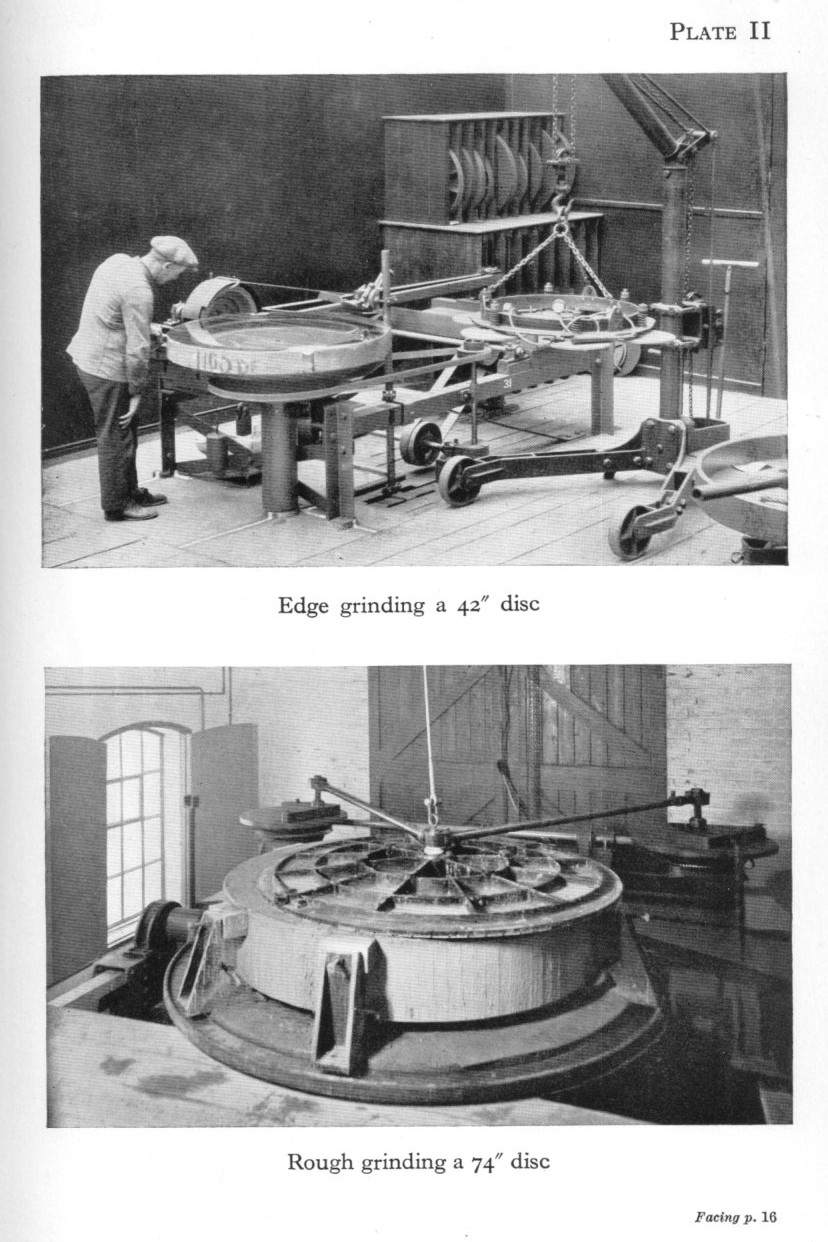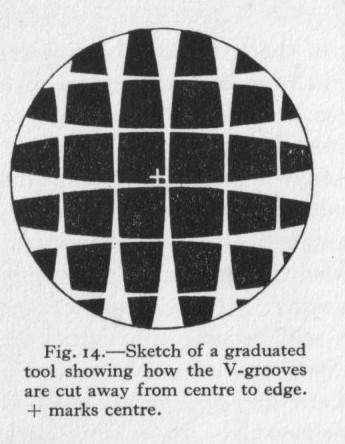
The book is available online here.
I finally got my hands on the book, "Preparation of Mirrors for Astronomical telescopes" by George McHardie. It's a wonderful modest book on mirror making, published in 1937 as part of the Blackie's "Technique" series. A rare find, I passed on a copy at a high price two years ago. Subsequently I leapt at the chance to purchase it when one became available for less than the postage to send it to me from the U.K.
A reading of the 88 page book reveals that little has changed in mirror making since 75 years ago.
The book begins with a nod to Isaac Newton, saying that "Nearly 270 years have elapsed since Newton first applied his genius to perfecting the reflecting telescope." As you know, Newton did little to advance the reflecting telescope after building his imperfect model; it took Hadley a hundred years later to invent the first practical reflecting telescope.
He also gets it wrong when ascribing the advantage that Pyrex has over plate glass to 'better conducting capacity' when in fact it is due to Pyrex's lower expansion properties. Nonetheless, he recommends plate glass. But these are minor quibbles, invariably found in, and a sign of, a very practical book devoted to helping the amateur astronomer create a telescope mirror.
In recommending a diameter to thickness ratio of 6:1, he makes the subtle point that it is not only about the mirror deforming under its own weight in a mirror cell resulting in a deformed star image, but also that the glass should not sag while its being ground and polished. Today many of us make the tradeoff in favor of thinner lighter weight glass with the burden of taking more care to prevent irregular flexure during grinding and polishing, but this is largely due to the availability of larger diameter mirror blanks.
McHardie recommends that the amateur begin with a long focus six inch mirror, a recommendation that is oft repeated today. His rationale though is based on the tradeoff between likelihood of successfully figuring the mirror and aperture. Today we have better mirror testing tools, so we tend to think more in terms of hours to complete and ease of handling. I wonder if we shouldn't be recommending longer focus mirrors; if nothing else the magnification is higher making planetary images more reasonable.
He describes an easy approach to edging rough cut glass; a device of interest to today's amateurs that are casting their own blanks. Also pictured are large grinding machines working mirrors up to 74 inches diameter, also of interest to today's amateurs.

His description of polishing is fascinating in that he mentions research into polishing and the two leading theories: one of planing and the other of flowing glass. Today we know that polishing is a chemical-mechanical action combining both planing and flow.
He gives good advice on pitch making and polishing, suggesting a polishing time of four to six hours for a six in mirror, about the same as today. Little has changed in 75 years.
One of the advantages of a long focus six inch mirror is that the errors and interpretation of the mirror's figure is much more straightforward. It makes his section on Foucault testing a nice understandable read.
He mentions several methods to parabolize the mirror, the first being the 'graduated' tool where the pitch squares are trimmed progressively towards the edge, resulting in thick squares at the center of the tool and smaller squares at the edge of the tool. He states that mirror making authorities strongly recommend this approach. It's an approach that deserves greater notice today and an approach that I use to figure my very fast mirrors.

Also useful is his extensive discussion of silvering; aluminizing apparently not being available. It is worth reading for those of us interested in silvering in order to side step the enormous cost of aluminizing large mirrors.
Finally he writes a great deal about star testing, clearly implying that the Foucault and the star test should be used in conjunction with each other. He also implies that a poor star testing mirror is quite usable given typical atmospheric conditions; thinking contrary to today's hyper attention and worries over exaggerated Strehl ratios.
McHardie discusses eyepieces, starting the section, "The subject of eyepieces might well occupy a complete book by itself." Nothing's changed here in 75 years: we still spill a great deal of ink and wring our hands incessantly over eyepieces!
All in all, McHardie wrote a wonderful book on mirror making, useful and relevant today; fascinating to those of us historians of mirror making, gleaning ideas from our predecessors and a time when tools were simpler and ingenuity perhaps keener.
Mel Bartels, 2014